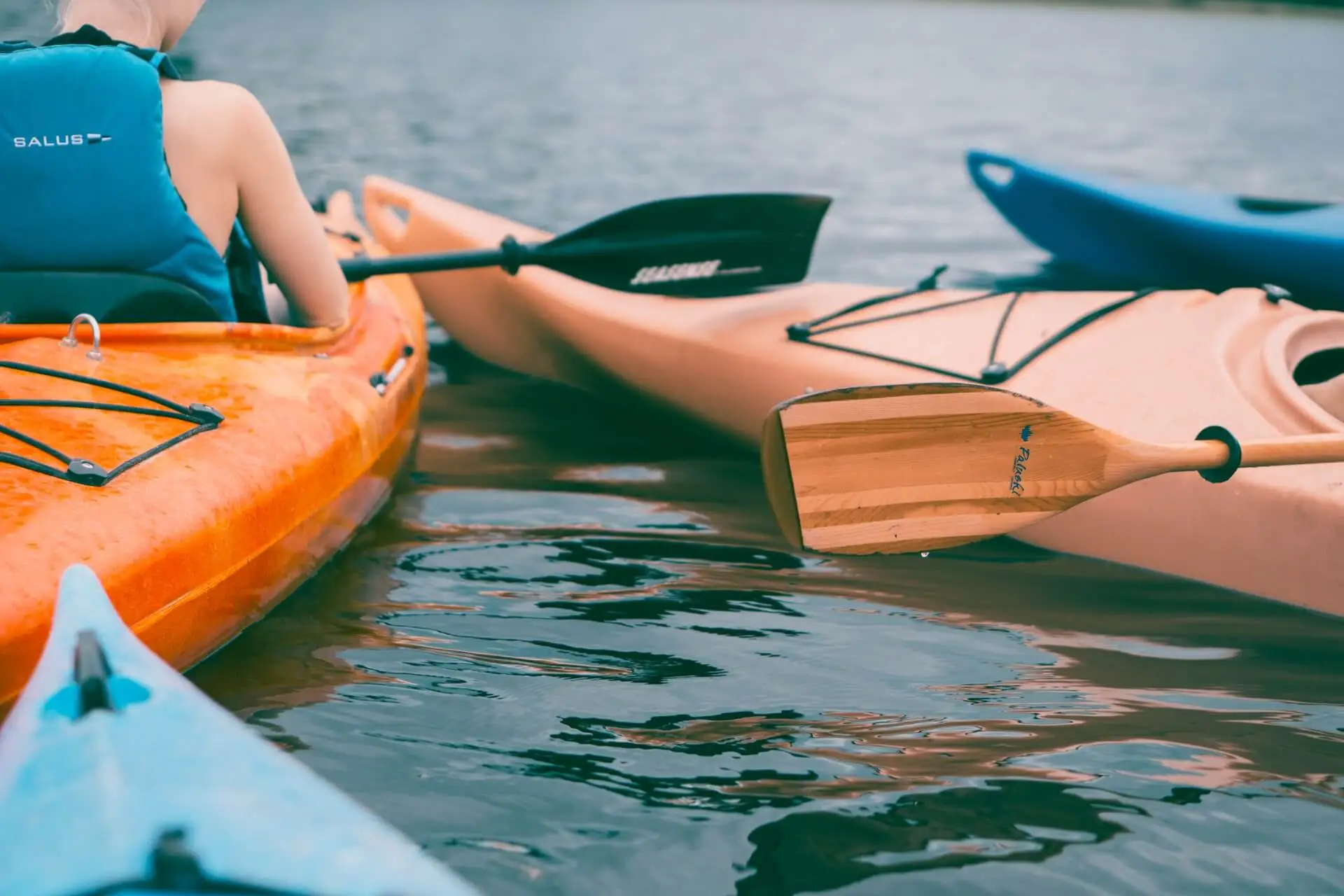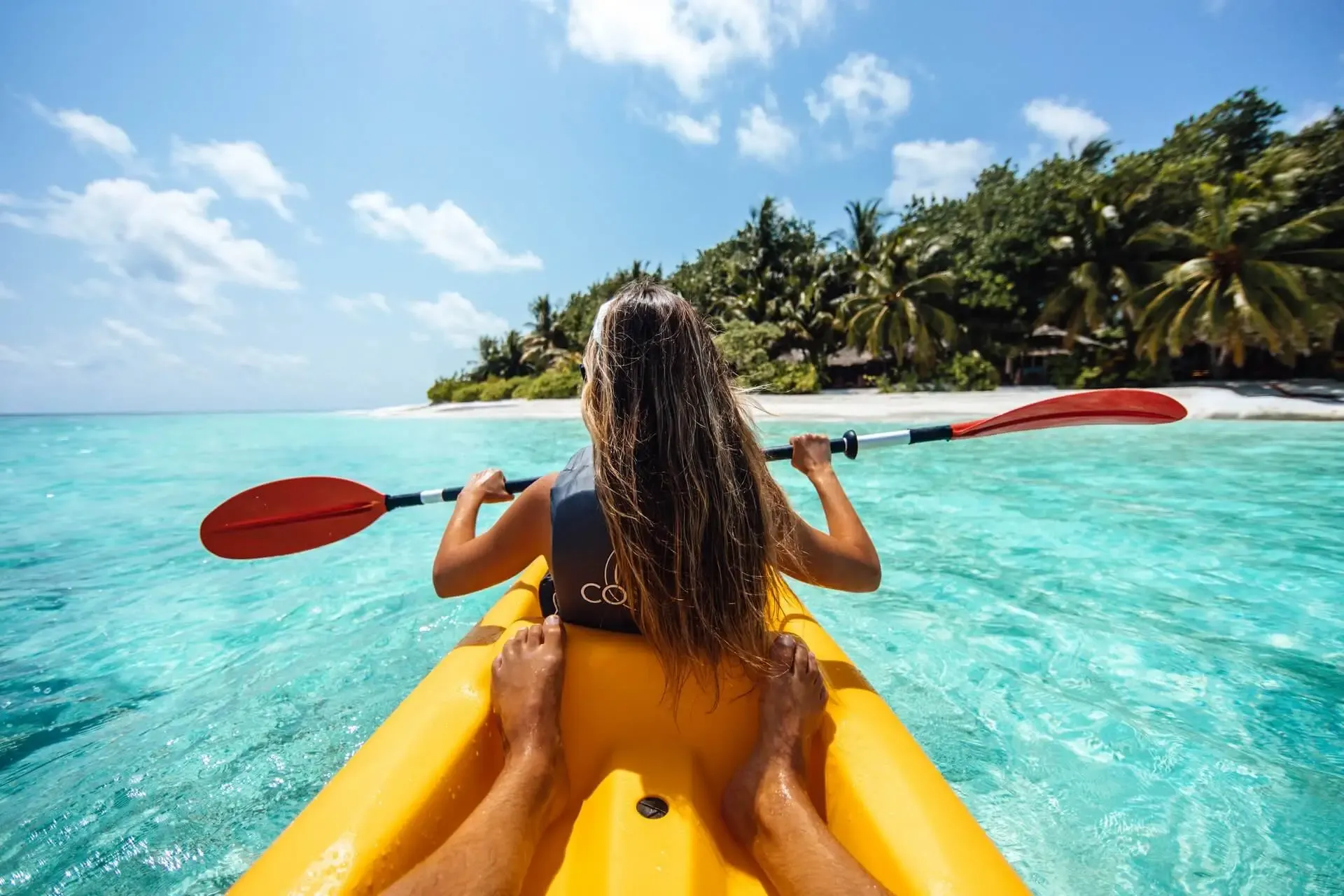Kayaking is a much-loved water sport, and when you see professionals cutting through the water and deftly navigating obstacles, it’s easy to understand why. With the correct paddling techniques, you can cover great distances and explore remote parts of rivers, lakes, and seas.
However, if you’re a beginner in this sport, it’s best to start slowly. Learning the basics will make the sport more enjoyable from the beginning and help you understand better if you’re ready to commit.
Kayak vs. Canoe, What’s the Difference?
Kayaking and canoeing are two popular ways to explore nature from the water, but they are quite different.
Canoe:
- Better for multi-day trips as it is large and can carry many things
- Better for families because one boat can accommodate children and two parents;
- More comfortable because you can stretch your legs or change positions.
Kayak:
- More stable, less vulnerable to wind and waves.
- Travels much faster, can travel greater distances to explore more.
- More agile, can quickly avoid obstacles.
- Kayaking alone is easier than paddling a canoe with others, which requires more coordination.
If you are thinking about starting one of these two sports, choose the one that best suits the adventures you want to have in the water.
Kayak Parts
The names of all the different parts of a kayak may seem complicated to those unfamiliar with boating, but the basics are quite simple:
Bow – front part of the kayak
Stern – back of the kayak
Hull – lower half of the kayak
Coverage – top half of the kayak
Pit – part where the athlete stands
Bench – highest part where the athlete sits
Footrest – foot support
Does kayaking help strengthen muscles?
Muscle pain after a day in the water is a clear answer to this question. Kayaking trains your back, arms and shoulders, as these are the muscles that are most exercised. However, there are also benefits for the torso, thanks to its movement when kayaking, and for the legs, due to the pressure you exert on the footpegs with each movement of the paddle. Kayaking is also a great aerobic exercise as it speeds up your heart rate.
Do you need to know how to swim to kayak?
Yes. It is necessary. Unless you’re kayaking in an area where you know you’ll have footing. In general, it is better to know how to swim to do any water sport, as the sea is something that is unpredictable and if something happens and you don’t know how to swim, you could easily put your life at risk. Avoid unnecessary risks!
Now that you know the basics, venture into the water with the help of our tips!
8 safety tips for beginners
- Always kayak with a life jacket. Not using them among the community is considered unacceptable (even dogs should use them in kayaks!).
- Remember to bring sunscreen.
- Never combine rowing and alcohol.
- Always dress for the water temperature and bring extra clothes in case it gets cold.
- Never paddle alone.
- Choose calm seas and bays, tranquil lakes or rivers without noticeable currents.
- Only paddle in water conditions where you would swim with confidence.
- Practice getting into the kayak before entering deep water. If you still can’t get back into the kayak comfortably in the water, stay close to shore so you can swim if necessary.

More suggestions for kayaking
List of items to take
Here are some things we recommend you take on your first kayaking adventure:
- Life jacket: you always need a life jacket, no exceptions;
- Dry bag: a small waterproof bag that you can fill and store in the kayak compartment;
- Water bottle: you will need to stay hydrated, you can keep it in the kayak compartment or between your feet;
- Extra Clothes: wear more and more layers depending on the weather;
- Car Kayak Carrier: if you have your own kayak, you will need this accessory to transport it to your destination with ease.

What to wear when kayaking
When it’s cold, to stay warm it’s essential to dress in several layers. See how to organize layers of clothes and what materials to keep in mind:
- Base layer: opt for short sleeves if it’s hot, but always carry a long-sleeved shirt with you if necessary. Look for synthetic materials, like polyester and polypropylene, which will keep you warm even if it gets wet.
- Middle layer: wool or a thicker polyester fabric will work well.
- Waterproof jacket: choose the most waterproof jacket you have. This will keep the underlying layers dry.
- Leggings and shorts: if it’s cold, opt for polyester leggings and waterproof shorts. If it’s hot, take one of these if necessary.
Should I bring a wetsuit?
Many kayaking experts are constantly asked what suit should be used for kayaking and the right answer is that it should not be used! These suits are designed to keep you warm when submerged in water. But as you will be in the kayak out of the water, the suit would be cold and impede movement.
Any waterproof clothing is the right choice. There are clothes suitable for kayaking, but if you’re just starting out, you can use what you already have at home.
Dress for the water, not the weather, and expect temperature variations. Even though you will mostly be out of the water, you should dress to stay warm if you fall into the water.
Do you like surfing? Learn how to choose the best wetsuit

How to get into a kayak
The best place to get into a kayak is a sandy beach. Just get in and push the kayak through the water with your arms.
From the pier: take the kayak to the lowest point of the pier, as the higher you are, the more difficult it will be to enter. The kayak must be parallel to the dock. Hold the side of the dock with your arms, and with a quick movement, place your feet on the kayak and turn towards the bow. Quickly lower yourself onto the bench as quickly as possible. Once you’re on the bench, you’ll have regained your balance and can adjust your feet from there.
From the water: if you fall into the water, make sure you turn the kayak over first so it doesn’t fill up too much with water. Find the oar and place it on the bungee cords to secure it. Holding the edge of the bench, one hand on the near side and the other on the far side, push upwards. You should try to lie down in the kayak with your chest facing the seat. Then try sitting down first, as this will help you maintain your balance. Then adjust your feet to make them comfortable. It is important to practice this in shallow waters before venturing into more challenging waters.

How to row
How to hold the oar
Your hand should hold the shovel at approximately 15-30 cm. Hold the paddle with a relaxed but secure grip. Your knuckles should be aligned with the edge of the paddle blade. A good way to know if you are doing it correctly is to hold the oar above your head, if your arms are bent at a 90 degree angle, it means you are holding the oar well.
Types of rowing
- Forward row: to move forward, turn your body in the opposite direction to where you are going to place the paddle. Place the oar in the water and straighten your body, using the force of this movement to push the oar through the water. The paddle should come out of the water when the hand closest to the water is level with your pelvis. The hand positioned higher on the shovel should push and the hand positioned lower should pull.
- Tip: the force that moves the kayak must come from the torso and not the arms.
- Round row – sweep: this is a forward row, but with an accentuated side row. To perform a sweep, position the oar right in front of the boat, make a large circular movement and continue until it almost touches the stern. Make this circular movement in the opposite direction you want to go. If you want to make a sharp turn, do this stroke on one side only. To turn with a forward jerk, complete the sweep on the opposite side you want to go and complete a normal stroke on the other side.

Kayaking with kids
If you are going kayaking with children, you can put them on your seat in a tandem kayak if they are already experienced. If not, you can also hold them in your arms. Bring even more layers of clothing for your children, as they lose body heat more quickly than adults in the water.
Always check that they are wearing the life jacket correctly and that it is the right size. If your child wants to paddle, they can use a baby or toddler paddle.
Children get bored easily, so we suggest you make a few stops to explore nature on the coast.
Is kayaking difficult?
No! Kayaking is a fantastic sport for beginners because you can easily master the basic skills. All you need is to learn the basic concepts, the essential tips and you’re ready to go for a kayak ride.
Of course, kayaking in rough waters or bad weather can be dangerous. But these conditions are not advisable even for those who have been practicing this sport for years.
Try renting a kayak to see if you really like the sport before buying it.
Try one of the 7 best kayaking trails in the Algarve

